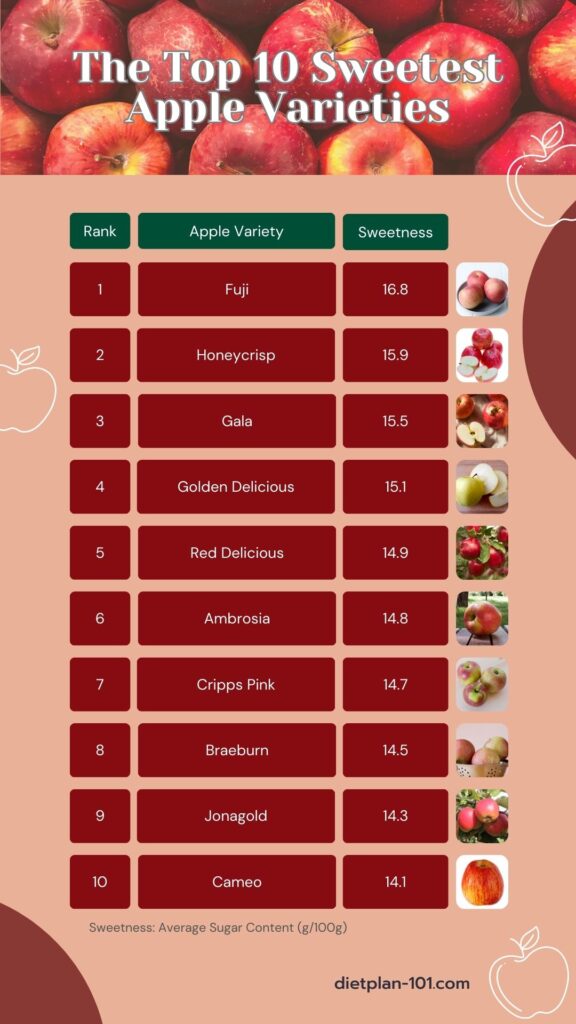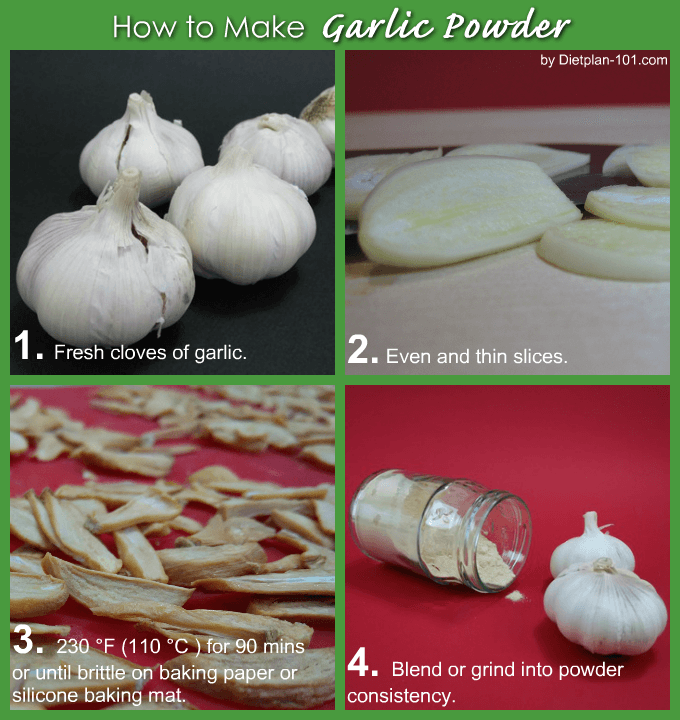Apples are the most widely consumed fruit in the world, and their delicious taste and impressive health benefits make them a favorite among many. However, with over 7,500 varieties on the market, it can be hard to determine which type tastes best!
In this blog post, let us explore the world of apples and discover the top 10 sweetest apple varieties together! We’ll also provide some tips on how to pick the sweetest apples and store them properly so they stay fresh and tasty all the time.
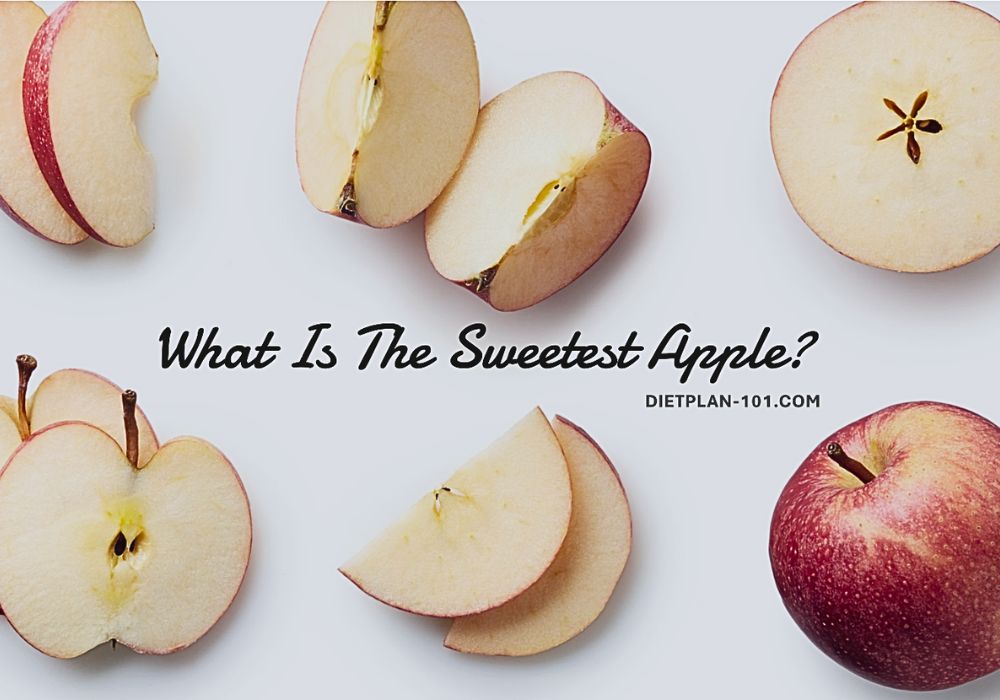
Table of Contents
The Factors That Determine Apple Sweetness
The sweetness of an apple is primarily determined by the sugar content and acidity, which affects how we perceive that sweetness.
However, several other factors—as listed below—also determine how sweet or tart a particular apple will be:
- Sugar Content: The sweetness of an apple depends on the concentration of natural sugars—such as glucose, fructose, and sucrose—present in the fruit. These sugars develop during ripening but vary depending on variety (e.g., Red Delicious contains higher levels than Granny Smith), growing conditions, and maturity at harvest time.
- Acidity: The acidity levels in apples also play a crucial role in determining their perceived sweetness. Apples contain malic acid—a primary acid in the fruit that contributes to its sour taste. Apples with higher acidity levels taste tarter, whereas those with lower acidity levels are sweeter—that’s one reason why Granny Smiths aren’t quite as tasty as Red Delicious! A balance between sweetness and acidity makes an apple truly enjoyable to eat.
- Ripeness: The ripeness of an apple has a significant impact on its sweetness. The sugar content of apple increases, and their acidity level decreases as they ripen. Thus, harvesting apples at their peak ripeness ensures the optimal balance of sweetness and tartness.
- Growing Conditions: Climate, soil composition, and sunlight exposure can affect the sweetness of apples. During warm and sunny climates, the apple trees tend to bear sweeter apples, as the fruit has more time to develop and accumulate sugars. Additionally, the availability of nutrients in the soil can influence the overall flavor and sweetness of the apples.
- Storage Conditions: The sweetness of apples may change during long-term storage. Some apples will continue to ripen and sweeten after being harvested, while others might lose their sweetness over time. Hence, proper storage conditions are important when preserving the freshness and sweetness of apples for an extended period.
Understanding the factors that affect apple sweetness can help you to better appreciate the diverse flavors and characteristics of different varieties.
Top 10 Sweetest Apple Varieties
The table below lists the top 10 sweetest apple varieties along with their average sugar content in grams per 100 g serving size.
| Rank | Apple Variety | Average Sugar Content (g/100g) |
|---|---|---|
| 1 | Fuji | 16.8 |
| 2 | Honeycrisp | 15.9 |
| 3 | Gala | 15.5 |
| 4 | Golden Delicious | 15.1 |
| 5 | Red Delicious | 14.9 |
| 6 | Ambrosia | 14.8 |
| 7 | Cripps Pink (Pink Lady) | 14.7 |
| 8 | Braeburn | 14.5 |
| 9 | Jonagold | 14.3 |
| 10 | Cameo | 14.1 |
[ads]
1. Fuji
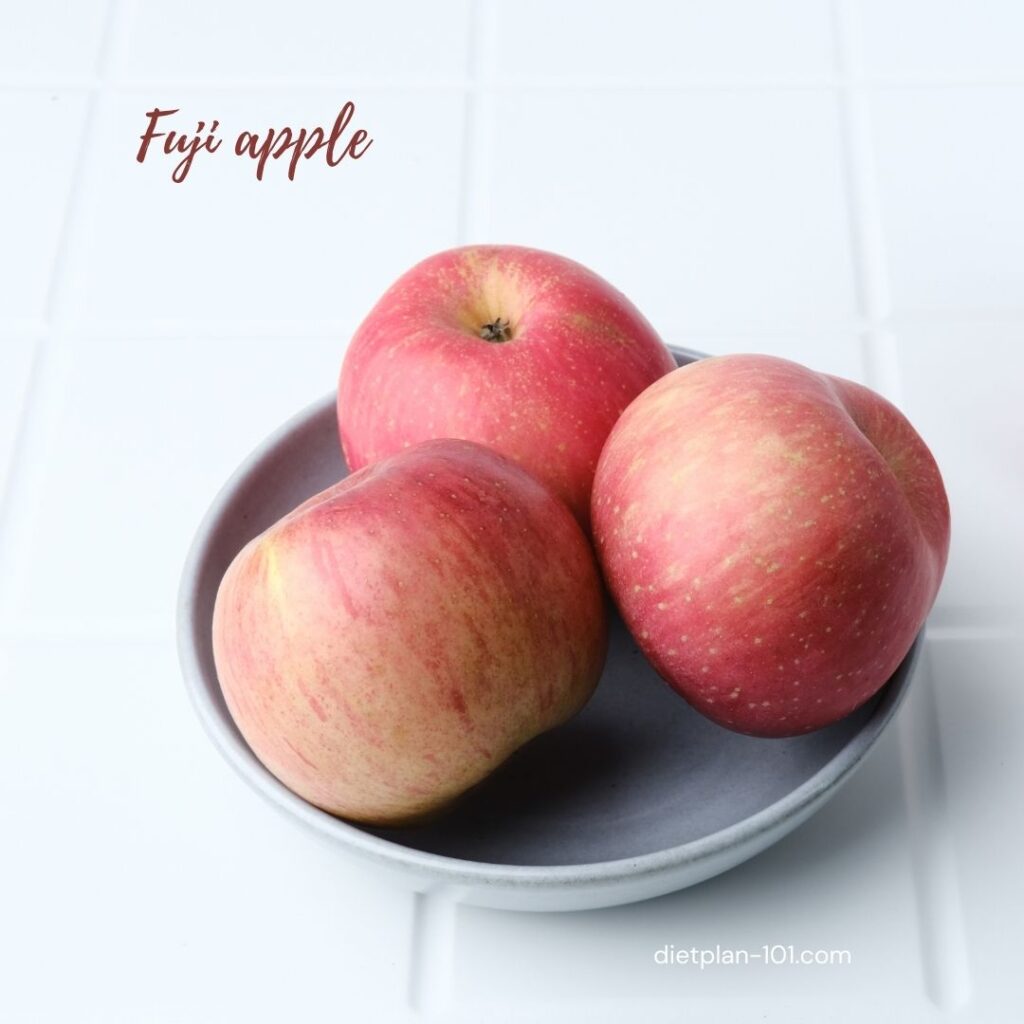
Fuji apples, a hybrid of the Ralls Janet and Red Delicious varieties, were created by Japanese growers in the 1930s. They have gained popularity across the globe since then. Fuji apples taste sweeter than most other kinds of apples as they have the highest sugar content of any variety. They are also known for their juicy and crisp texture—perfect for eating fresh when you want something sweet or using in salads or desserts when a touch of sweetness is desired.
2. Honeycrisp
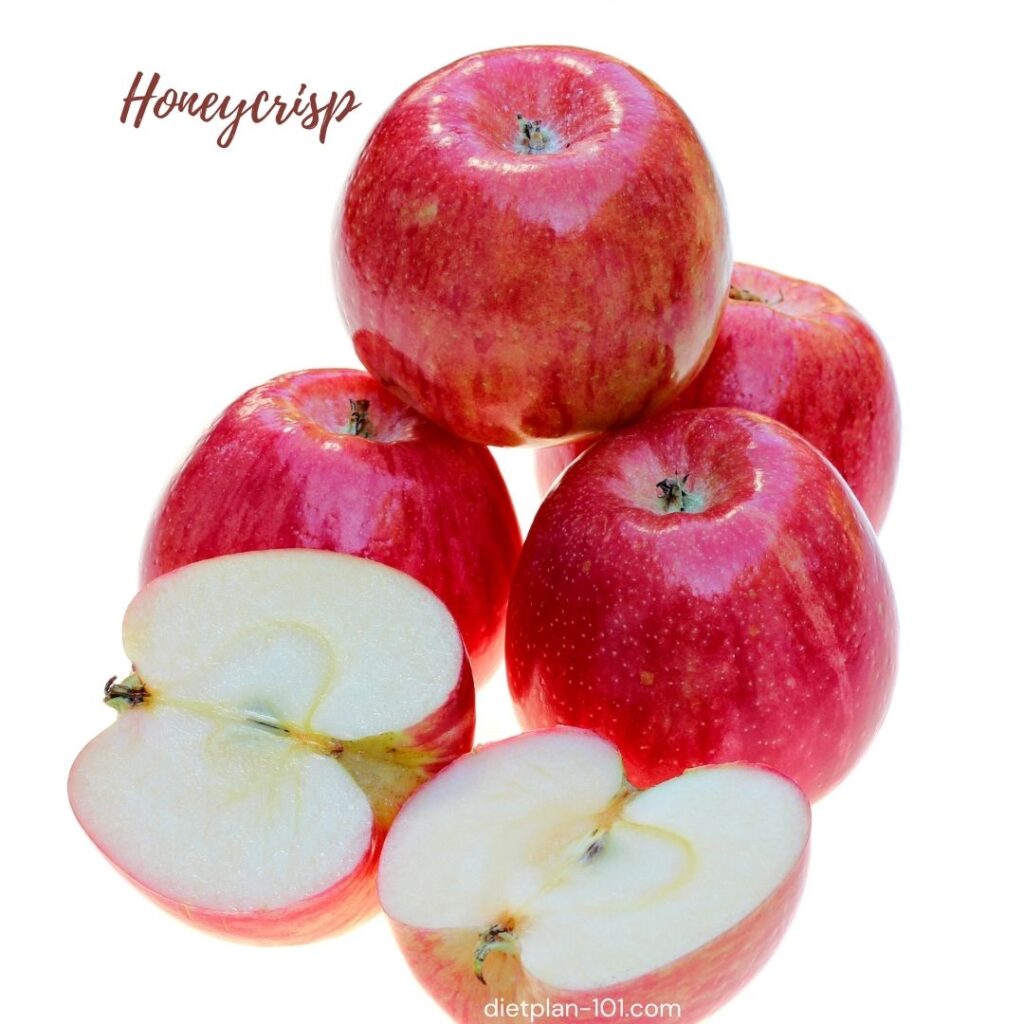
Honeycrisp apples are kinda new as they came out in 1991 from the University of Minnesota. They’ve got this amazing honey-like taste, which made them super popular. Plus, their texture is just perfect—crunchy and juicy, so they’re great for munching on or using in baking.
3. Gala
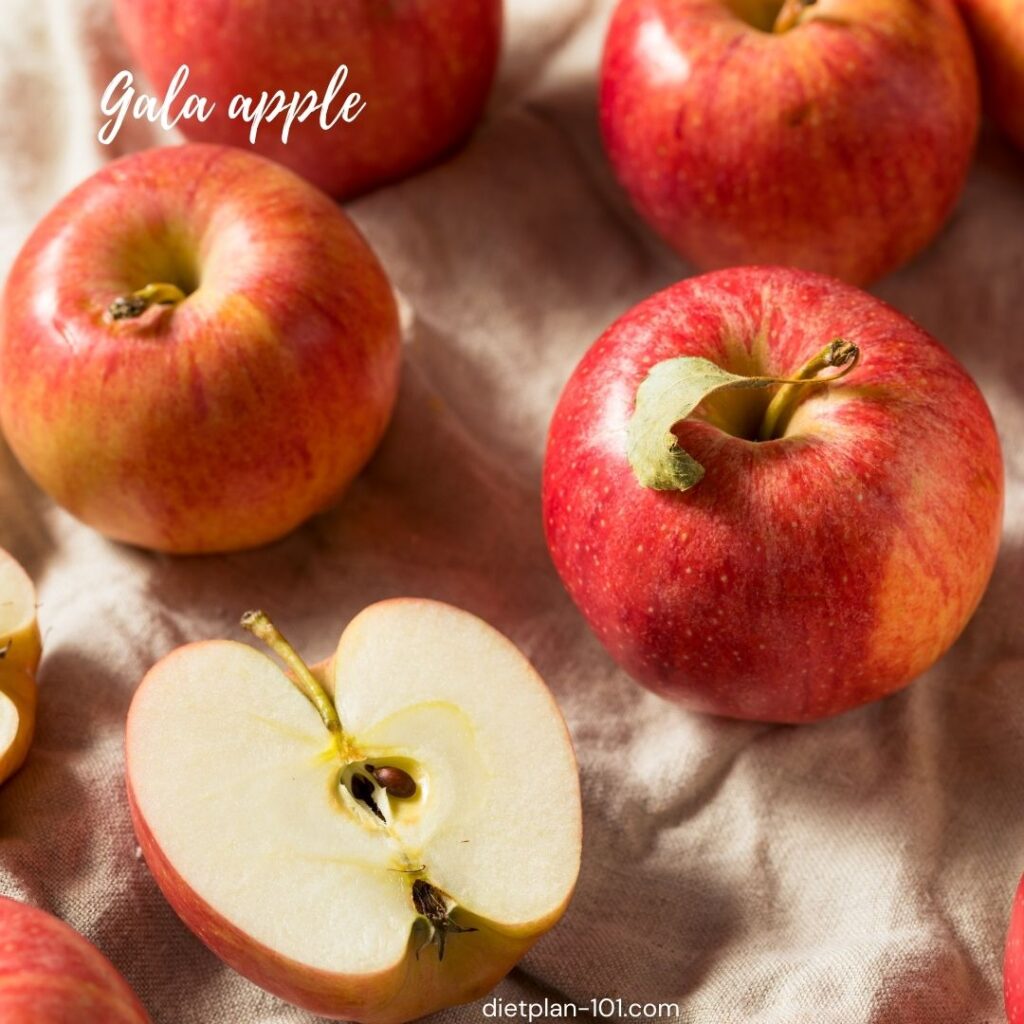
Gala apples were developed in New Zealand and now have become increasingly popular due to their sweet taste as well as versatility. They’ve got thin skin, a crispy texture, and rock those red and yellow stripes. You can eat them fresh, or use them for pies and applesauce.
4. Golden Delicious
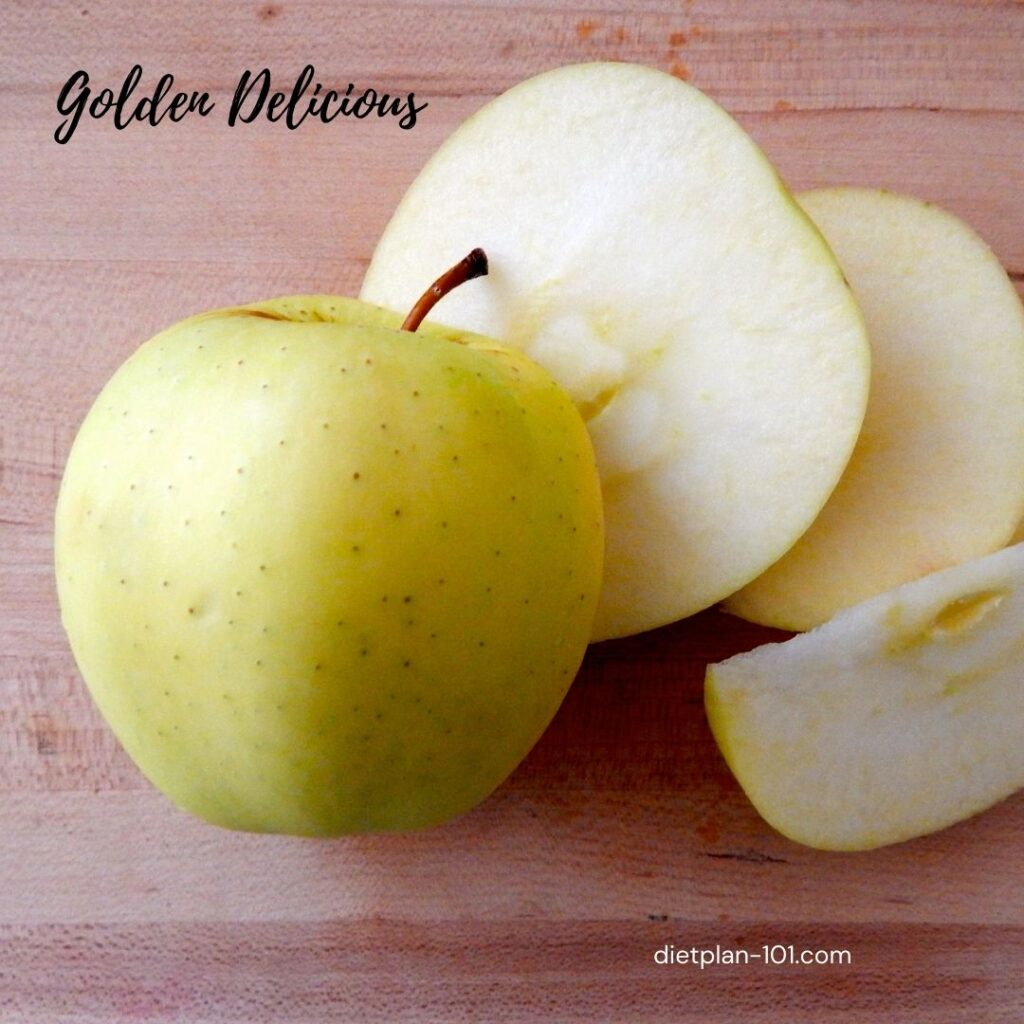
Golden Delicious apples are a classic American fave with their golden-yellow skin. The flesh of this fruit has a mildly sweet flavor and delicate texture: it’s firm yet crisp, making these apples great for snacking or cooking.
5. Red Delicious
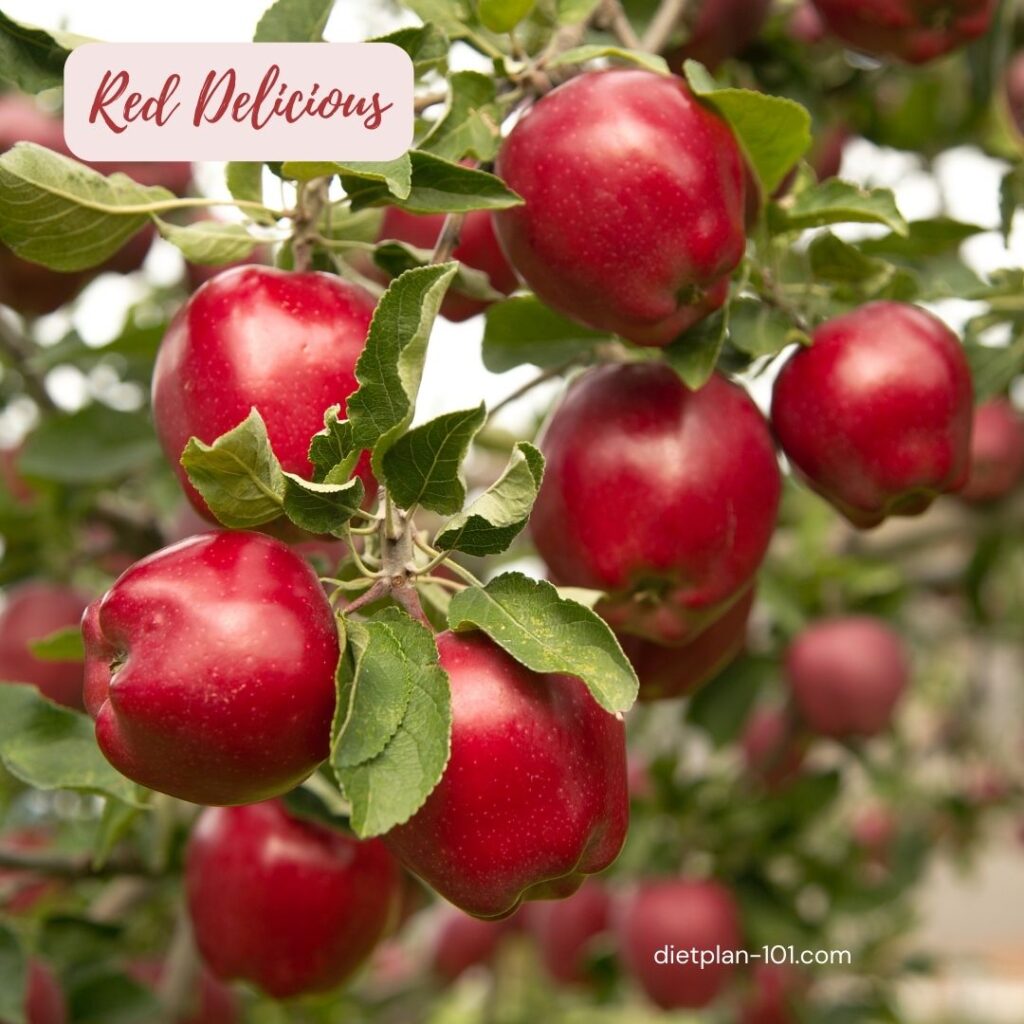
Red Delicious apples are another iconic American variety. Their deep red-colored appearance and slightly elongated shape make them easy to identify, even from a distance. Red Delicious apples are not as sweet as other varieties, but their high sugar content still makes them a favorite among those who enjoy indulging in sweets. Red Delicious apples are best eaten fresh, as their texture tends to become mealy when cooked.
6. Ambrosia
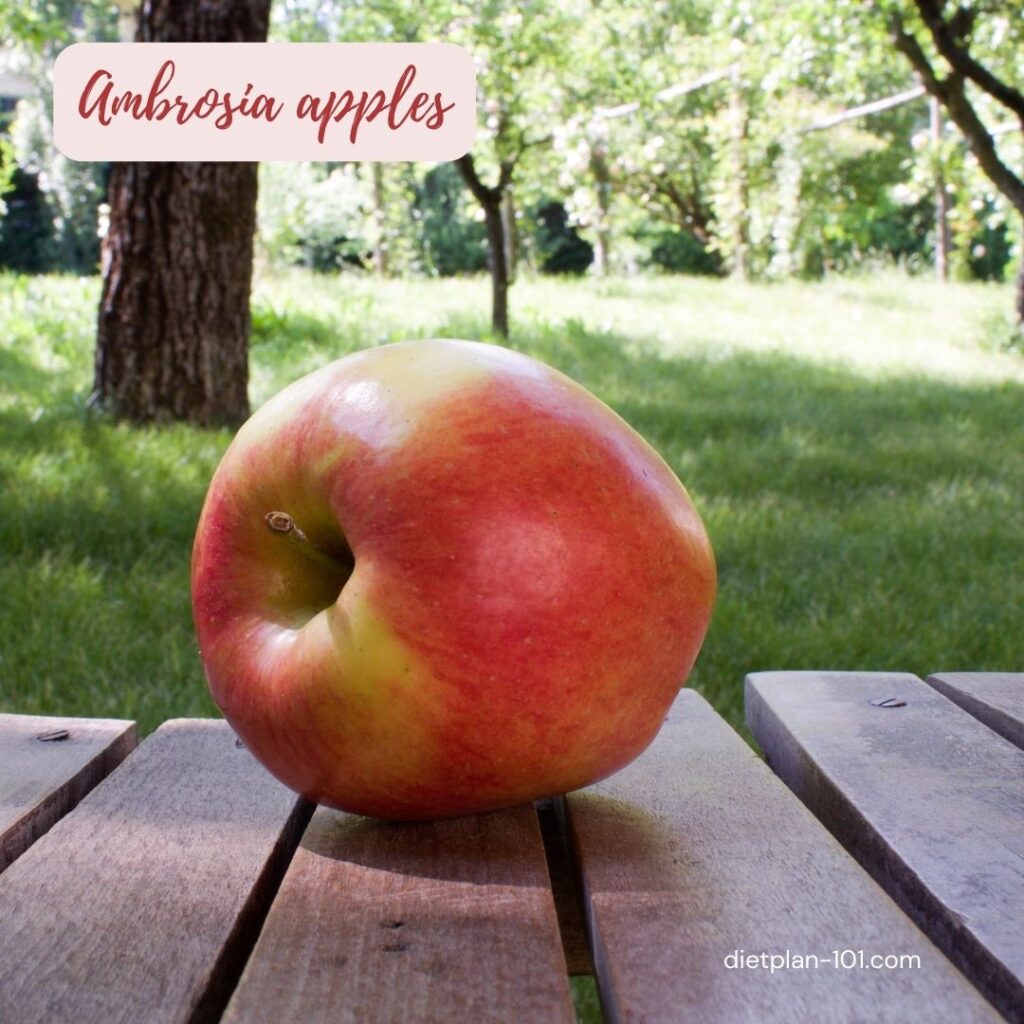
Ambrosia apples are a recently discovered variety, found in British Columbia, Canada, in the ‘90s. With beautiful red and yellow skin and honey-like sweetness that melts into juicy tenderness as you eat it—these are truly something special! They have a low acidity level, which contributes to their overall sweetness. Ambrosia apples are ideal for eating fresh, as their delicate texture may not hold up well when cooked.
7. Cripps Pink (Pink Lady)
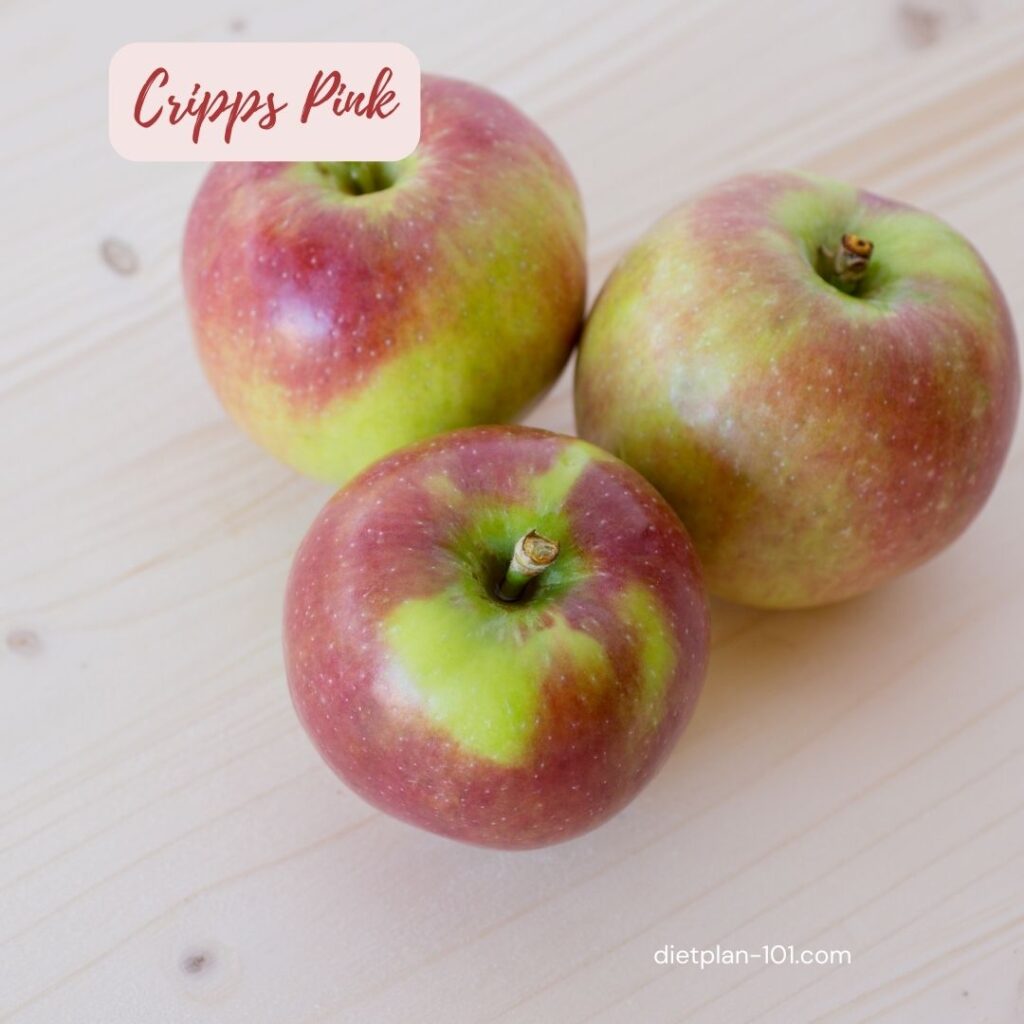
Cripps Pink, also known as Pink Lady apples—named for their rosy skin and hint of yellow-green—were developed in Australia’s southern state of Victoria in the 1970s. These firm crunchy fruits contain more than a touch of pomaceous (apple) flavor. Cripps Pink apples taste sweet and tart at the same time, making them perfect for eating fresh, used in baked goods, or making cider.
8. Braeburn

Braeburn apples were discovered in New Zealand in the 1950s as chance seedlings. They have striking red and green skin and a crisp, juicy texture. Braeburn apples are known for their well-balanced sweetness—a perfect blend of sweet and tart flavors. They are versatile apples, suitable for eating fresh, baking, or cooking.
9. Jonagold
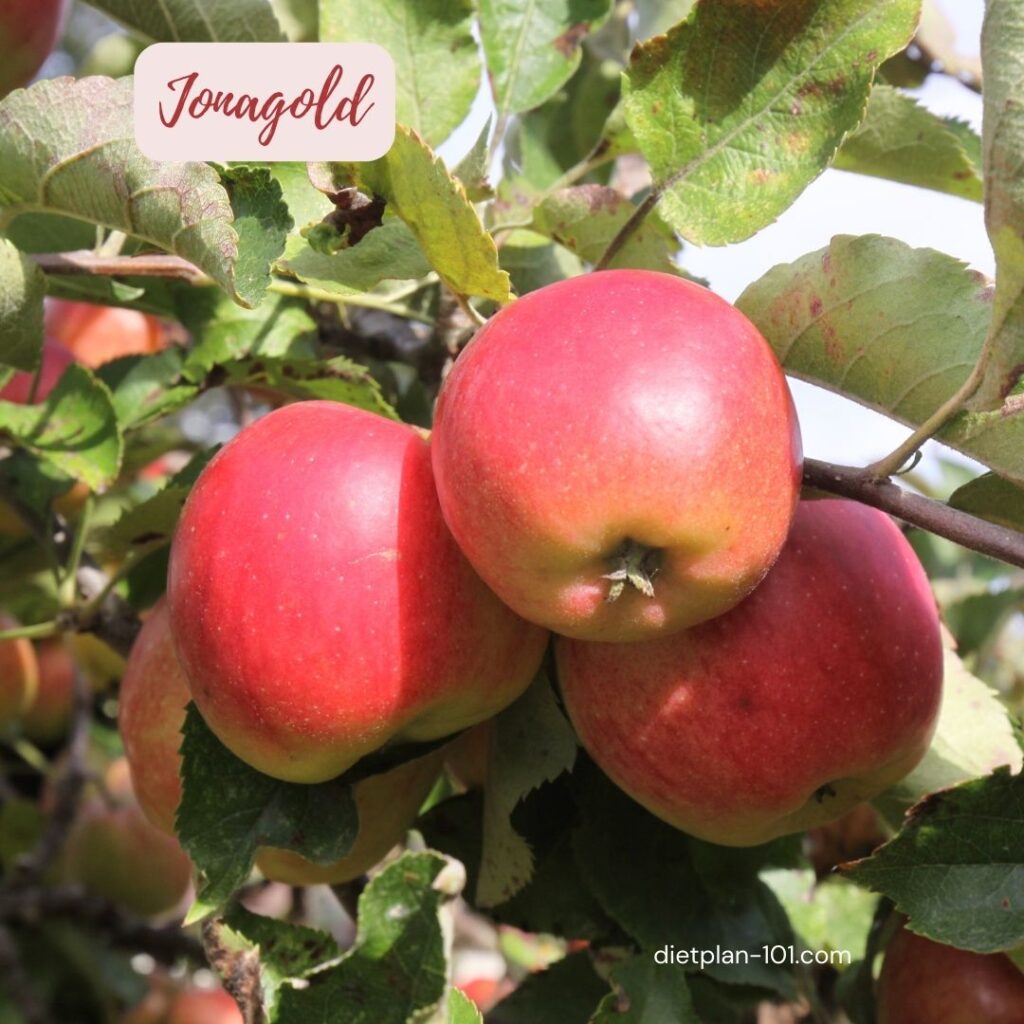
Jonagold apples are a hybrid created by crossing Jonathan and Golden Delicious varieties, developed in the 1960s. They have attractive red-and-yellow skin, juicy flesh with few seeds, and high disease resistance. Jonagold apples are appreciated for their perfect balance of sweetness and tartness, making them a popular choice for various culinary applications. They are great for eating fresh, baking, or making apple sauce.
10. Cameo
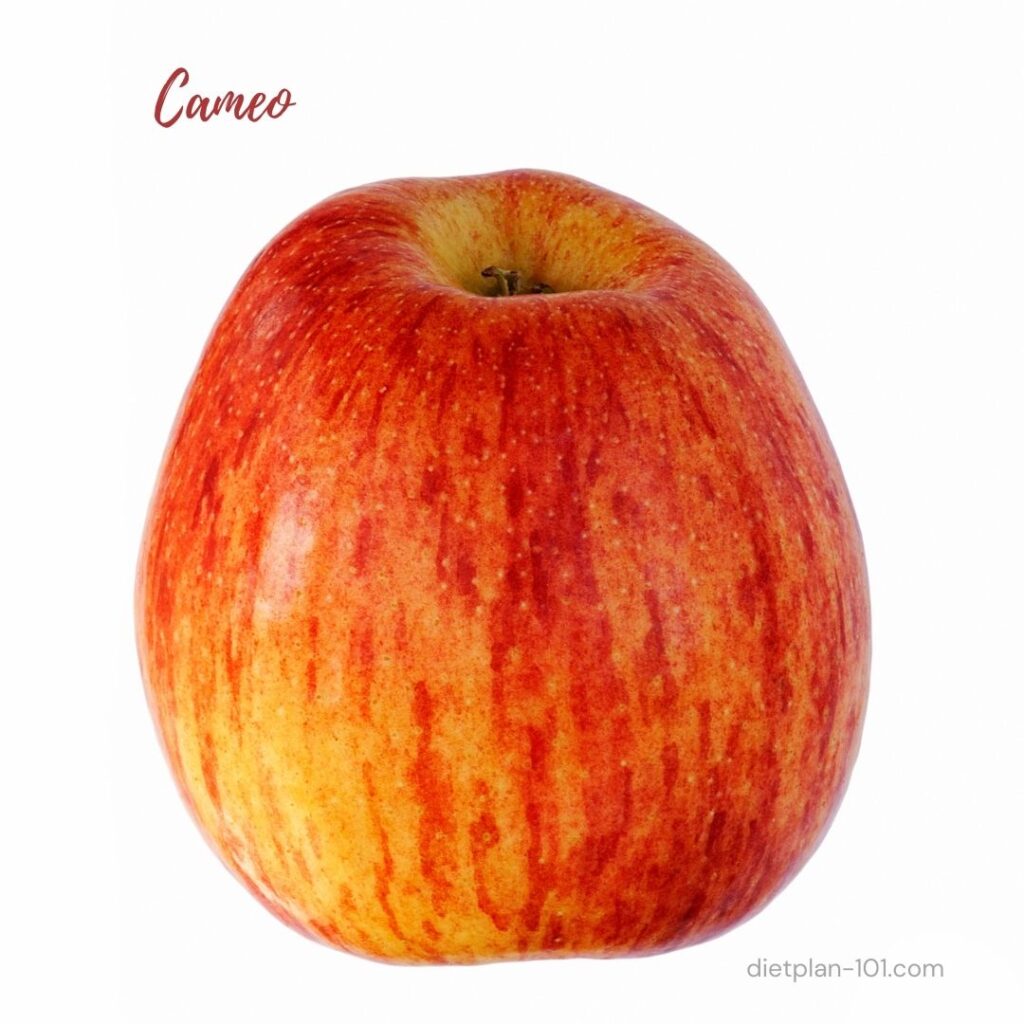
Cameo apples popped up by chance in Washington State, USA, back in the 1980s. They’ve got this cool red and yellow-striped skin and a firm, crispy texture. Cameo apples are known for their sweet, kinda tart flavor and they store super well. They’re great for eating fresh, baking, or cooking.
Here are the sweetest apples you can find. Whether you’re looking for the perfect apple to satisfy your sweet tooth, or you want to bake a delicious apple dessert, these varieties are sure to please.
[ads]
How to Choose the Sweetest Apple
- Check the color: Generally, a more vibrant color indicates a sweeter apple. Look for apples with deep red, golden-yellow, or green hues, depending on the variety.
- Examine the skin: Smooth, shiny, and unblemished skin is a good indicator of a fresh, sweet apple.
- Feel the firmness: Gently press your thumb against the apple’s surface. A ripe, sweet apple should be firm but not rock-hard.
- Smell the aroma: A fragrant, sweet smell is a sign of a delicious and ripe apple.

- How Many Apples Are in a Pound? Counting Apples for Recipe
- How to Keep Apples from Turning Brown: Tips and Tricks for Freshness
- Baked apple recipe
Storing and Preserving Your Apples
- Refrigeration: To maintain the freshness and sweetness of your apples, store them in the refrigerator. Place them in a plastic bag with holes for ventilation and store them in the crisper drawer, away from vegetables.
- Room Temperature: Apples can be kept at room temperature for a short period, but to maintain freshness and sweetness it is best to refrigerate them.
- Freezing: Apples can be frozen for long-term storage. Peel, core, and slice the apples, then toss them with lemon juice to prevent browning. Freeze the apples on a baking sheet and then transfer them to an airtight container or freezer bag once solid.
- Canning and Dehydrating: Another option for preserving apples is canning or dehydrating. You can make applesauce, apple butter, or fruit leather to enjoy your apples throughout the year.
Conclusion
The following list of the top 10 sweetest apple varieties is a comprehensive guide to help you choose the perfect apple for your sweet tooth. When buying apples, look for apples with smooth skin, firm flesh (but not hard or soft), and a sweet smell.
Whether you want an apple for snacking, baking a dessert, or making homemade applesauce, there is sure to be at least one sweet variety that will suit your needs. Be willing to experiment with different varieties of apples until you find the ones that taste best to you.
Happy apple picking!
Frequently Asked Questions
Which apple is the sweetest?
Fuji apples are considered the sweetest apple variety due to their high sugar content.
How do I pick the best apples?
Look for apples with a vibrant color, smooth and shiny skin, firm texture, and a pleasant aroma. Avoid apples with bruises or soft spots.
Can I use any apple for baking or cooking?
While most apples can be used for baking or cooking, some varieties hold up better than others. For example, Granny Smith, Braeburn, and Pink Lady apples are excellent choices for baking, while Golden Delicious and Jonagold work well for both baking and cooking.
How should I store apples?
Store apples in a cool, dark place, preferably in the refrigerator. Separate apples from other fruits, as they release ethylene gas, which can cause other fruits to ripen quickly.
Can I eat the skin of an apple?
Yes, apple skin is edible and contains many nutrients, such as fiber and antioxidants. Make sure to wash the apples thoroughly before eating to remove any dirt or pesticide residues.
Why do some apples taste sweeter than others?
pples contain different levels of natural sugars, which contribute to their sweetness. Other factors, such as acidity, can also affect the perceived sweetness of an apple. Weather conditions, growing methods, and storage can also play a role in an apple’s taste.
When is apple season?
Apple season typically begins in late summer and extends through the fall. However, this can vary depending on the specific apple variety and region.
